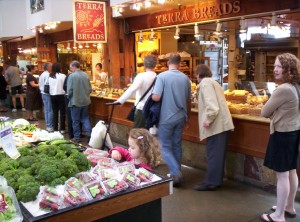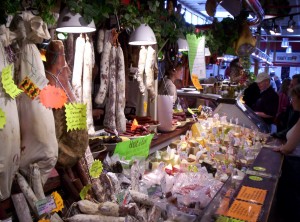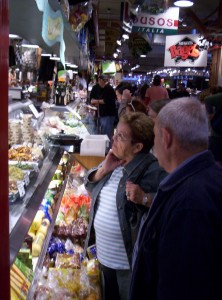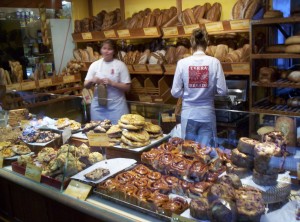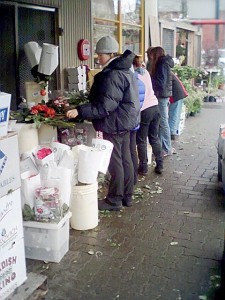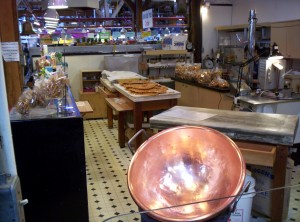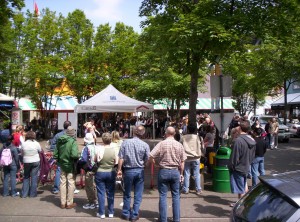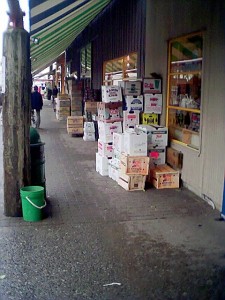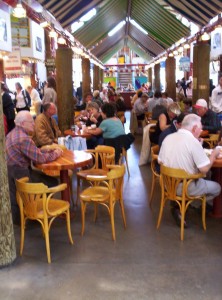There are six elements to an Urban Magnet:
1) The activity-based subculture – The foundation of any magnet is an activity and the group of people who engage in it enthusiastically and visibly. No urban magnet can be created without an activity group as its base. While many people not connected to the activity group will use a magnet, its core energy must come from an activity-based subculture group. A value/identity group is not sufficient because it only results in an aesthetic expression, with no unique activity patterns at its center. The aesthetic aspects of the identity of an activity group need to be addressed as noted below, but it is the activities of a group that provide the vitality. Once an activity group has been identified, then the magnet is created by bringing together the other five aspects of a place directly dedicated to supporting and expressing the lifestyle, activities, identity and values associated with that activity.
2) Specialty retail –Retail associated with the activity needs to be provided. Eg: For a sports magnet, stores that sell sporting equipment should be present, food stores for a food magnet, etc… The retail needs wherever possible to be highly desirable to the core activity group in that it often offers specialty goods required to support excellence in that activity (rare foods for a food magnet; unique climbing equipment for an outdoor recreation magnet, etc…). In addition to the core magnet retail, additional retail and (such as cafes) support the daily needs of people who work and play in the magnet area should be provided.
3) Production / manufacture – Production space and activities directly related to creating or repairing things that are sold or are associated with the activity and its related employment uses is one of the most important aspects of a strong magnet. Production is one of the key aspects of ‘authenticity’ and it ensures people who are dedicated to the activity and related things are present every day – creating these things. This is the key element that makes a magnet different than a shopping center where nothing is created.
4) Educational / institutional / office – Educational / institutional uses need to be included to bring employment and businesses directly related to the activity, as well as students into the space to create an atmosphere of learning and exploration in the place. The white collar instructor and office jobs create a more stable local economy and the energy of the students gives a place a visible sense of energy and authenticity. The presence of educators also brings an intellectual component of inquiry and debate that deepens the culture of the activity group in that place. The presence of all the activity and magnetism makes it a great address to have for a business.
5) Programmed events – Programmed events need to be provided in the magnet, throughout the year, that draw the activity group from the regional area to it on a regular basis, and thereby provide opportunities to knit the community to this activity and the magnet first as spectators and possibly later as participants.
6) Urban form and design – The urban form (buildings and landscape) need to be designed to respond to the identity and aesthetics of this activity subculture group. The first layer of the design is to ensure it visibly and actively is built around supporting the activity with a rich public realm program. The next aspect is to carefully ensure the inherent aesthetics of the activity and its subculture is dominant in the form. For instance, an outdoor recreation magnet will need a different urban form to make its activity group feel at home than a magnet dedicated to high fashion, or customized automobiles, or artisan food. This approach to design can be done in a more abstract and subtle manner or a more literal manner depending on what’s appropriate. The key consideration is to make the magnet look a little different than the areas around it so it is memorable for its uniqueness and to make its core activity group really feel at home. Finally, the urban design needs to facilitate the gathering of people and have other aspects of good urban form such as transparency, human scale, and others.
